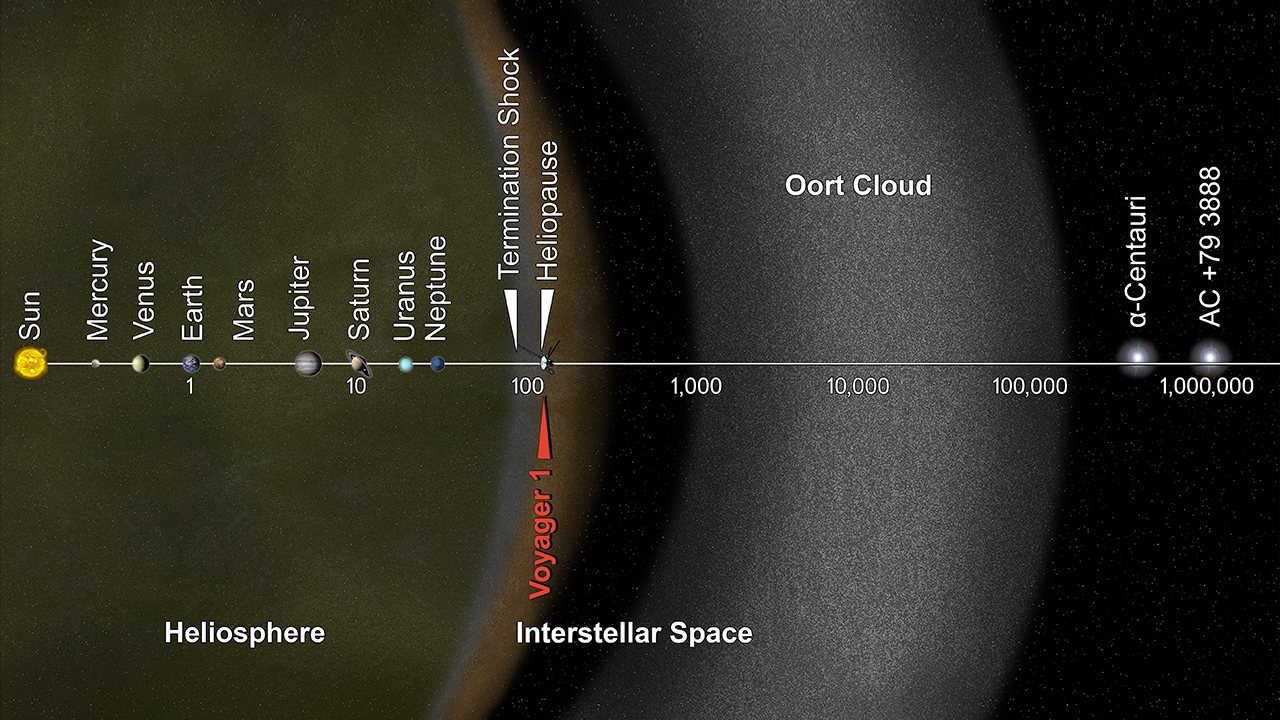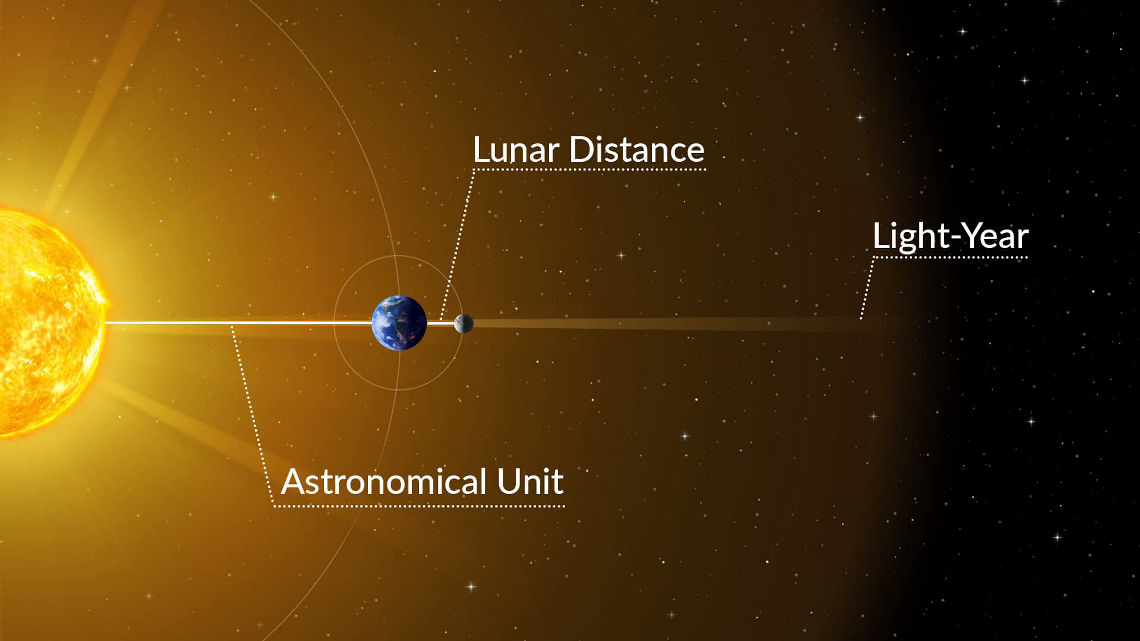How Far is a Light Year?
How far is a light-year? It might seem like a weird question because isn’t a ‘year’ a unit of time, and ‘far’ a unit of distance? While that is correct, a ‘light-year’ is actually a measure of distance. A light-year is the distance light can travel in one year.
Light is the fastest thing in our Universe traveling through interstellar space at 186,000 miles/second (300,000 km/sec). In one year, light can travel 5.88 trillion miles (9.46 trillion km).
A light year is a basic unit astronomers use to measure the vast distances in space.
To give you a great example of how far a light year actually is, it will take Voyager 1 (NASA’s longest-lived spacecraft) over 17,000 years to reach 1 light year in distance traveling at a speed of 61,000 kph.
Related Post: 13 Amazing Facts About Space
Why Do We Use Light-Years?
Because space is so vast, the measurements we use here on Earth are not very helpful and would result in enormous numbers.
When talking about locations in our own galaxy we would have numbers with over 18 zeros. Instead, astronomers use light-time measurements to measure vast distances in space. A light-time measurement is how far light can travel in a given increment of time.
- Light-minute: 11,160,000 miles
- Light-hour: 671 million miles
- Light-year: 5.88 trillion miles
Understanding Light-Years
To help wrap our heads around how to use light-years, let’s look at how far things are away from the Earth starting with our closest neighbor, the Moon.
The Moon is 1.3 light-seconds from the Earth.
Earth is about 8 light-minutes (~92 million miles) away from the Sun. This means light from the Sun takes 8 minutes to reach us.
Jupiter is approximately 35 light minutes from the Earth. This means if you shone a light from Earth it would take about a half hour for it to hit Jupiter.
Pluto is not the edge of our solar system, in fact, past Pluto, there is the Kieper Belt, and past this is the Oort Cloud. The Oort cloud is a spherical layer of icy objects surrounding our entire solar system.
If you could travel at the speed of light, it would take you 1.87 years to reach the edge of the Oort cloud. This means that our solar system is about 4 light-years across from edge to edge of the Oort Cloud.
The distance between the Sun and Interstellar Space. NASA/JPL-Caltech.
The nearest known exoplanet orbits the star Proxima Centauri, which is four light years away (~24 trillion miles). If a modern-day jet were to fly to this exoplanet it would not arrive for 5 million years.
One of the most distant exoplanets is 3,000 light-years (17.6 quadrillion miles) away from us in the Milky Way. If you were to travel at 60 miles an hour, you would not reach this exoplanet for 28 billion years.
Our Milky Way galaxy is approximately 100,000 light-years across (~588 quadrillion miles). Moving further into our Universe, our nearest neighbor, the Andromeda galaxy is 2.537 million light-years (14.7 quintillion miles) away from us.
The Andromeda Galaxy is 2.537 million light-years away from us.
Light, a Window into the Past
While we cannot actually travel through time, we can see into the past. How? We see objects because they either emit light or light has bounced off their surface and is traveling back to us.
Even though light is the fastest thing in our Universe, it takes time to reach us. This means that for any object we are seeing it how it was in the past. How far in the past? However long it took the light to reach us.
For day-to-day objects like a book or your dog, it takes a mere fraction of a fraction of a second for the light bouncing off the object to reach your eye. The further away an object is, the further into its past you are looking.
For instance, light from the Sun takes about 8 minutes to reach Earth, this means we are always seeing the Sun how it looked 8 minutes ago if you were on its surface.
The differences between Lunar Distance, an Astronomical Unit, and a Light Year. Illustration by Star Walk.
Traveling back through our solar system, Jupiter is approximately 30 light-minutes from Earth, so we see Jupiter how it looked 30 minutes ago if you were on its surface. Extending out into the Universe to our neighbor the Andromeda galaxy, we see it how it was 2.537 million years ago.
If there is another civilization out in the Universe watching Earth, they would not see us here today, they would see Earth in the past. A civilization that lives 65 million light-years away would see dinosaurs roaming the Earth.


